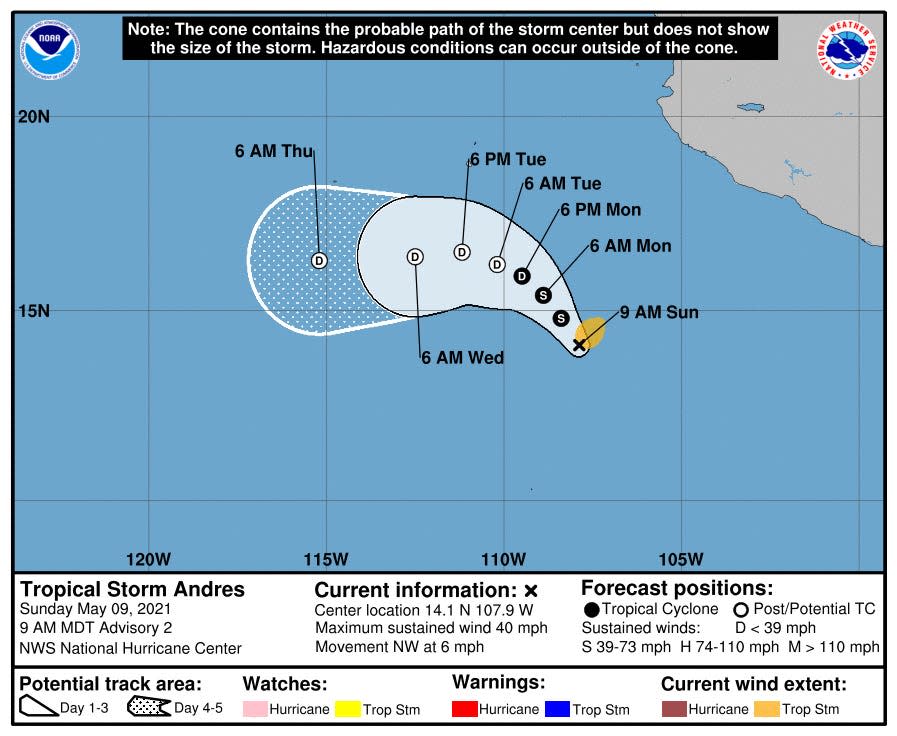Andres becomes the earliest tropical storm on record to form in the Pacific
Tropical Storm Andres on Sunday became the earliest named storm on record to develop in the eastern Pacific Ocean, according to the National Weather Service.
The system formed hundreds of miles off the west coast of Mexico, had sustained winds of 40 mph and was moving out to sea at 6 mph as of Sunday morning. It is not expected to threaten land and will probably dissipate within 48 hours, NWS predicted.
The storm is notable for its early arrival – just beating out the record set by Tropical Storm Adrian, which strengthened to named status on May 10, 2017, according to the National Oceanic and Atmospheric Administration. The eastern Pacific hurricane season runs from May 15 to Nov. 30.
Top forecasters predicted 2021 could pack a wallop with another active, above-average hurricane season. The Atlantic hurricane season runs from June 1 to Nov. 30, though storms sometimes form outside those dates. In fact, storms have formed in May in each of the past six years.
Meteorologist Phil Klotzbach and other experts from Colorado State University expect there will be 17 named storms in the Atlantic – eight becoming hurricanes.
Global warming's role:How is climate change worsening wildfires and hurricanes?
Tropical Storm #Andres has formed in the eastern tropical Pacific. Andres is the earliest calendar year eastern tropical Pacific (to 140°W) named storm formation on record, breaking old record of May 10 set by Adrian in 2017. #hurricane pic.twitter.com/JedYGVOIA9
— Philip Klotzbach (@philklotzbach) May 9, 2021
A tropical depression officially becomes a storm when windspeed reaches 39 mph and becomes a hurricane when it hits 74 mph.
An average season has 12 tropical storms, six of which are hurricanes. In 2020, there were 30 named storms, 13 of which were hurricanes.

Scientists have concluded human-caused global warming has strengthened the wind speeds of hurricanes, typhoons and cyclones.
Start date could move: Hurricane season start date could shift earlier because of a surge in May storms
A study published last year examined 40 years’ worth of satellite images and found the chances of hurricanes becoming Category 3 or higher have grown, consistent with expectations of storm behavior in response to a warming world.
Global warming is caused by the burning of fossil fuels such as coal, oil and gas, which releases greenhouse gases such as carbon dioxide into the Earth's atmosphere. This has caused the planet to warm to levels that cannot be explained by natural factors.
Contributing: Doyle Rice
This article originally appeared on USA TODAY: Earliest tropical storm on record forms in Pacific

 Yahoo Movies
Yahoo Movies 